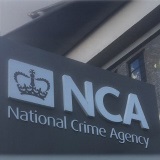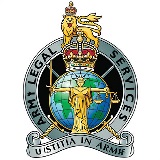*/

Interested in bidding for public sector legal work? Josh Bates explains how to get into your best tendering position before the new procurement system starts in 2024
Every year the UK public sector spends around £300 billion through public procurement on goods, works and services (including legal services) which equates to £1 in every £3 of public spending.
The government, in its December 2020 Green Paper Transforming Public Procurement, expressed the view that the current public procurement regime is too restrictive and complex. It is seeking to use Brexit freedoms to overhaul the current patchwork of public procurement regulations, much of which was derived from EU law. The Procurement Bill 2022-23 intends to introduce a single framework that simplifies procurement and reduces bureaucracy, to create a fairer, more transparent, and competitive system, in the process repealing the following:
The Bill, due to be enacted sometime in 2024, aims to achieve a single joined-up procurement system that will allow public sector suppliers to enter a single set of credentials in one place and make it easier for organisations of all sizes to bid for public sector contracts. In the interim, the existing regulations will, of course, continue to apply. Barristers will need to follow the regulations and respond to the invitations to tender with as much preparation and precision as answering an exam question or presenting a client’s case in court.
Barristers interested in public sector legal work should seize this opportunity to evaluate how best to approach bidding for public sector contracts to meet their own operational goals and objectives.
One of the most important considerations for any barrister interested in bidding for a public sector contract is who the bidding party should be. Bidding as an individual or a syndicate of individuals, without the benefit of limited liability protection, is not advisable in what can be a potentially high-risk environment. While the traditional chambers operating model remains strong in many ways, it does not necessarily provide a solution to the limited liability protection issue.
Fortunately, there are some effective alternatives now available to barristers in the form of entities (or ‘Bar firms’ as we like to call them). The Bar Standards Board’s regulatory reforms enabling barristers to form BSB entities have opened up new models for barristers to collaborate via limited liability profit-sharing vehicles. These new operating models can take the form of Authorised Bodies (fully owned and managed by authorised individuals) or Licensed Bodies (owned and managed jointly by authorised individuals and non-lawyers).
There is, of course, also the option for barristers to form a law firm regulated by the Solicitors Regulation Authority for contracting purposes, which some have done.
So, what are the main considerations when looking to form a BSB entity?
Sharing risk and reward may be an alien experience for many barristers. Some will find it hard to take the required entrepreneurial leap, put their cash on the line and accept the uncertainties of collective decision-making. It is best to keep the core ownership of the entity tight and engage other resources required by means of employee or contractor status.
Limited liability partnerships (LLPs) and limited companies are now the main structures for legal businesses. Barristers are therefore likely to follow suit and choose to form a BSB Authorised Body or BSB Licensed Body. It is important to take specialist accountancy and legal advice on the best legal structure for your entity.
However exciting a public sector contract may appear, it is essential to prepare financial forecasts to understand its true financial impact. If your forecasts are prepared internally, it would be wise to have them thoroughly stress-tested by external accountants who are experienced in the legal sector. They are likely to have a good awareness of the special market forces impacting the models and will help you temper any unrealistic optimism.
Individual barristers within traditional chambers are very adept at managing conflicts of interest. Once barristers are working together and sharing profits as LLP members or co-shareholders, the issue of conflicts becomes inherently more complex. Conflicts need to be anticipated and considered very carefully as part of any entity project. The development and enforcement of sophisticated conflict management protocols is therefore essential. It is wise to run scenario tests to make sure future conflicts can be identified and managed.
The introduction of BSB entities has already impacted the Bar Mutual and the wider professional indemnity insurance markets, which have responded positively. Barristers working together in an entity structure will have a very different risk profile to those operating in a traditional chambers model. The growing complexity of the professional indemnity insurance market emphasises the value of engaging professional indemnity insurance brokers who truly understand the legal sector and have direct access to the whole of the market.
Unless all funding for an entity is being provided by the entity owners themselves, some external funding will be required. This could be debt (from banks or other lenders) or equity (from private equity providers or business angels) or a mixture of both. The key to getting the funding mix right is in understanding the drivers of the funders and how these will impact the structure of the entity and its ability to operate in the way the owners want it to. It is important to be clear on what type of funding is needed in the foreseeable future and seek to align the interests of the entity owners and the funders.
Whether you choose to establish a BSB-regulated Bar firm or an SRA-regulated law firm, both regulators will want clear sight of the vehicle’s operational structure (including participants’ roles and responsibilities), clarity regarding how risk management and compliance will be managed, how financial risks will be managed, how the firm will be funded, how the vehicles’ legitimate and compliant sources of work will be generated, and evidence of professional indemnity insurance cover.
Barristers who are considering bidding for public sector contracts have a genuine opportunity to structure a bidding vehicle that will not only provide a high level of personal liability protection but also create a business entity that could potentially generate capital value in the long term. Understanding the changing rules relating to procurement and taking active steps to prepare for future invitations to tender in this way will enable barristers to demonstrate to suppliers a level seriousness and innovation that should increase their chances of success.

Every year the UK public sector spends around £300 billion through public procurement on goods, works and services (including legal services) which equates to £1 in every £3 of public spending.
The government, in its December 2020 Green Paper Transforming Public Procurement, expressed the view that the current public procurement regime is too restrictive and complex. It is seeking to use Brexit freedoms to overhaul the current patchwork of public procurement regulations, much of which was derived from EU law. The Procurement Bill 2022-23 intends to introduce a single framework that simplifies procurement and reduces bureaucracy, to create a fairer, more transparent, and competitive system, in the process repealing the following:
The Bill, due to be enacted sometime in 2024, aims to achieve a single joined-up procurement system that will allow public sector suppliers to enter a single set of credentials in one place and make it easier for organisations of all sizes to bid for public sector contracts. In the interim, the existing regulations will, of course, continue to apply. Barristers will need to follow the regulations and respond to the invitations to tender with as much preparation and precision as answering an exam question or presenting a client’s case in court.
Barristers interested in public sector legal work should seize this opportunity to evaluate how best to approach bidding for public sector contracts to meet their own operational goals and objectives.
One of the most important considerations for any barrister interested in bidding for a public sector contract is who the bidding party should be. Bidding as an individual or a syndicate of individuals, without the benefit of limited liability protection, is not advisable in what can be a potentially high-risk environment. While the traditional chambers operating model remains strong in many ways, it does not necessarily provide a solution to the limited liability protection issue.
Fortunately, there are some effective alternatives now available to barristers in the form of entities (or ‘Bar firms’ as we like to call them). The Bar Standards Board’s regulatory reforms enabling barristers to form BSB entities have opened up new models for barristers to collaborate via limited liability profit-sharing vehicles. These new operating models can take the form of Authorised Bodies (fully owned and managed by authorised individuals) or Licensed Bodies (owned and managed jointly by authorised individuals and non-lawyers).
There is, of course, also the option for barristers to form a law firm regulated by the Solicitors Regulation Authority for contracting purposes, which some have done.
So, what are the main considerations when looking to form a BSB entity?
Sharing risk and reward may be an alien experience for many barristers. Some will find it hard to take the required entrepreneurial leap, put their cash on the line and accept the uncertainties of collective decision-making. It is best to keep the core ownership of the entity tight and engage other resources required by means of employee or contractor status.
Limited liability partnerships (LLPs) and limited companies are now the main structures for legal businesses. Barristers are therefore likely to follow suit and choose to form a BSB Authorised Body or BSB Licensed Body. It is important to take specialist accountancy and legal advice on the best legal structure for your entity.
However exciting a public sector contract may appear, it is essential to prepare financial forecasts to understand its true financial impact. If your forecasts are prepared internally, it would be wise to have them thoroughly stress-tested by external accountants who are experienced in the legal sector. They are likely to have a good awareness of the special market forces impacting the models and will help you temper any unrealistic optimism.
Individual barristers within traditional chambers are very adept at managing conflicts of interest. Once barristers are working together and sharing profits as LLP members or co-shareholders, the issue of conflicts becomes inherently more complex. Conflicts need to be anticipated and considered very carefully as part of any entity project. The development and enforcement of sophisticated conflict management protocols is therefore essential. It is wise to run scenario tests to make sure future conflicts can be identified and managed.
The introduction of BSB entities has already impacted the Bar Mutual and the wider professional indemnity insurance markets, which have responded positively. Barristers working together in an entity structure will have a very different risk profile to those operating in a traditional chambers model. The growing complexity of the professional indemnity insurance market emphasises the value of engaging professional indemnity insurance brokers who truly understand the legal sector and have direct access to the whole of the market.
Unless all funding for an entity is being provided by the entity owners themselves, some external funding will be required. This could be debt (from banks or other lenders) or equity (from private equity providers or business angels) or a mixture of both. The key to getting the funding mix right is in understanding the drivers of the funders and how these will impact the structure of the entity and its ability to operate in the way the owners want it to. It is important to be clear on what type of funding is needed in the foreseeable future and seek to align the interests of the entity owners and the funders.
Whether you choose to establish a BSB-regulated Bar firm or an SRA-regulated law firm, both regulators will want clear sight of the vehicle’s operational structure (including participants’ roles and responsibilities), clarity regarding how risk management and compliance will be managed, how financial risks will be managed, how the firm will be funded, how the vehicles’ legitimate and compliant sources of work will be generated, and evidence of professional indemnity insurance cover.
Barristers who are considering bidding for public sector contracts have a genuine opportunity to structure a bidding vehicle that will not only provide a high level of personal liability protection but also create a business entity that could potentially generate capital value in the long term. Understanding the changing rules relating to procurement and taking active steps to prepare for future invitations to tender in this way will enable barristers to demonstrate to suppliers a level seriousness and innovation that should increase their chances of success.

What’s it really like to work in the National Crime Agency’s in-house legal team? TM, a lawyer in the NCA’s Financial Disruptions Litigation team, shares a day in her life

By the Chartered Governance Institute UK Ireland

Q and A with Major Susie Brooke, Legal Officer in Army Legal Services

Have you considered being a barrister in the British Army? Here’s an insight into a career in Army Legal Services

Clare describes her journey from Crown Prosecution Service legal trainee to Senior Crown Prosecutor, a typical ‘day in the life’ and the inspiration she draws from her career

What's it like being a legal trainee at the Crown Prosecution Service? Amy describes what drew her to the role, the skills required and a typical day in the life